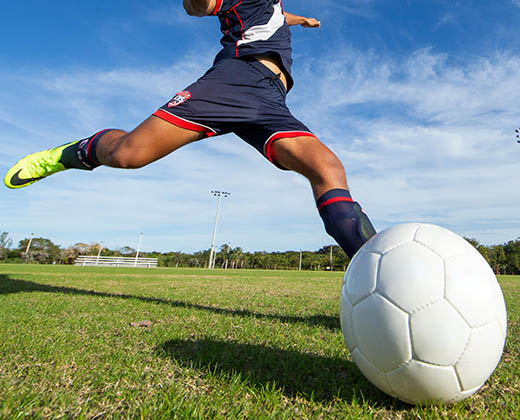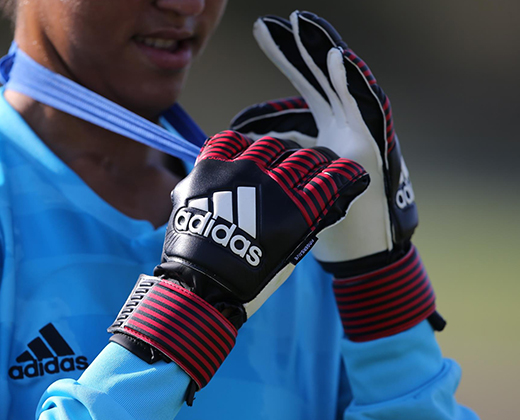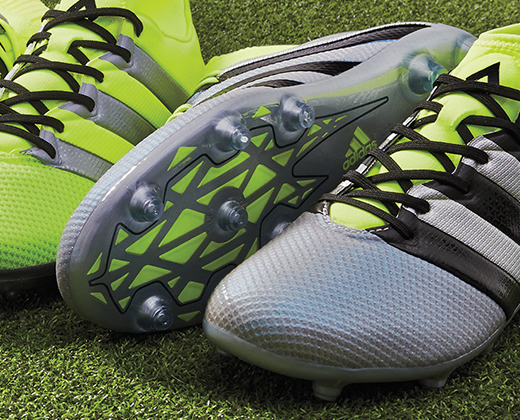Goalkeeper Tips on Distributing the Ball
Learn how to properly distribute the ball and keep possession in the match with these soccer tips.
Keeping possession of the ball in soccer is just as important as scoring goals or making a big save. When you have possession of the ball, that means the other team must defend you. You’re limiting the opposition from taking shots and creating plays. Now, your team is the one in the driver’s seat.
Goalkeepers can help their team maintain possession by distributing the ball in a controlled manner. There are three different ways you can pass the soccer ball to your teammates: rolling, throwing or punting the ball are all effective options.
Division I goalkeeper coach Erik Eisenhut says goalkeepers must make a decision quickly and stick with it. In soccer, goalkeepers have only six seconds to get rid of the ball. These three options can help goalkeepers efficiently distribute the ball to their teammates without wasting time. Eisenhut breaks down each method with these soccer tips.
OPTION 1: ROLLING THE BALL
According to Eisenhut, this is where precision comes into play. “Rolling the ball can be a more accurate way than playing the ball with your feet or throwing, as the ball is more controlled,” he says.
When you roll the ball, Eisenhut says to keep your elbow bent, not straight. Finding a player that’s open with no approaching defenders is crucial, too. You don’t want the ball to be intercepted by an opposing player. “Find the player that’s open and roll the ball out to them with your hand underneath the ball,” Eisenhut says. “Be sure to have a strong release, so the ball can reach your teammate.”
When rolling the ball, bend your knees as well. To add more power to your roll, run with the ball and then release it before exiting the penalty area. Remember, when you leave the penalty area, you are now deemed a field player, and may not touch the ball with your hands.
Eisenhut reminds goalkeepers to keep constant communication. Call out the name of your teammate so they know the ball is coming toward them.
OPTION 2: THROWING THE BALL
This option is much quicker than rolling the ball. While you still have six seconds to get the ball out of your hands, throwing the ball is a great option to get a fast-paced play underway.
Immediately locate a teammate and throw the ball, almost like a windmill. “To complete a throw, use one hand and throw the ball, keeping your elbow and arm straight. Your throw should be overhand and over your head, like a windmill,” Eisenhut says.
Your arm should be fully extended when winding up and throwing the ball. When the ball leaves your hand, your palm should face the ground.
OPTION 3: PUNTING THE BALL
A third and final option is punting the ball. Punting can help you cover the longest distance when distributing the ball. However, it might not be the most accurate option for goalkeepers. Sometimes there are elements you cannot control, such as the wind.
Punting the ball can be beneficial if you’re looking to keep opposing forwards at bay and give your team time to set up. Eisenhut says waiting for your field players to get in position before taking a punt is crucial.
When you punt the ball, keep your toes down. “Be sure you know how far you’re capable of kicking the ball, communicating that with your teammates. Transfer the ball from both hands to just one hand. Use whatever hand you’re most comfortable with,” he says.
Then, drop the ball down to your foot. Kick it on the laces of your cleat, near the knot of your shoe. Avoid kicking the ball straight up in the air. Put an angle on it so it can reach your teammates in the middle of the pitch. “If a counterattack is not available right away, give them time to set up,” Eisenhut says.
Always remember to communicate with your teammates, no matter how you choose to distribute the ball. Be sure to survey the pitch and decide which method will work best in the moment. Look for teammates that are open and call out to them. If a counterattack isn’t available right away, be sure to give your teammates time to set up.
Looking for more goalie tips with Eisenhut? The coach talks about the do's and don'ts of being a goalkeeper with these Pro Tips.








